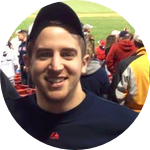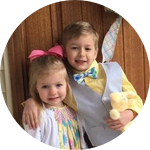About This Project
While many might think it typical and healthy for a preschool child to take naps, in recent years, the preschool nap has been called into question. Preschool naps are being removed from the classroom to make time for additional directed learning, and some researchers have suggested that naps diminish nighttime sleep quality. However, my research has shown that this may not be true. I aim to better understand the function of the nap in preschoolers, and how the nap may influence nighttime sleep.
Ask the Scientists
Join The DiscussionWhat is the context of this research?
A number of recent studies have shown that naps benefit memory (Kurdziel et al., 2013) and emotional regulation (Cremone et al., in press). However, children typically wean themselves off of napping during the preschool age (Iglowstein, et al., 2003). Given that this is a transitional time with respect to sleep, there is a lot of controversy as to when a child should be napping (Washington Post Article).
One of the strongest arguments against napping is that is could be detrimental to nocturnal sleep (Staton, et al., 2015). While nighttime sleep is slightly reduced with a nap, children actually sleep more across the 24-hour period (nap time + overnight sleep). Much more work is needed to understand the benefits and risks of napping during preschool.
What is the significance of this project?
This project has the potential to benefit the scientific community as well as inform parents, health care professionals, and educators. By examining sleep microstructure in this developmental population, I will be able to definitively determine how naps are affecting nocturnal sleep quality. This will eventually lead to stronger, scientifically backed recommendations as to when children should be weaned off of napping to provide the greatest benefit to learning and emotional regulation. Lastly, this research will help to better understand one of the greatest unsolved scientific mysteries - why do we sleep? In examining such a drastic shift in sleep patterns, this research will inform the greater scientific community about why we need to sleep, and when we need to sleep.
What are the goals of the project?
Children will have sleep recorded during a nap period, and during overnight sleep following a day with a nap, and following a day without a nap. I will then use the Brainvision Analyzer 2 software to assess sleep microstructure through spectral analysis.
I am particularly interested in the spectral power of slow waves (SWA). SWA has been shown to reflect sleep pressure or sleep need (Achermann & Borbely, 2003). I will examine the changes in SWA between the two experimental nights - one after a day of waking, and one after a day with a nap. The relationship between SWA in the nap and nocturnal SWA can also be assessed. Lastly I am interested in the pattern of SWA decline over the course of the night in preschool aged children, as this has never been examined.
Budget
In my research, I collect physiological recordings of children's sleep (using a specialized EEG). With these recordings, I can determine which stage of sleep the child is in over the course of the sleep bout. However, we are learning that there is a lot more to sleep quality than just sleep stages.
This software will allow me to conduct spectral analysis on my recordings of children's naps and overnight sleep bouts. Spectral analysis is a method of determining the power of certain brainwave frequencies. I am particularly interested in slow wave activity (SWA). SWA is indicative of sleep pressure and sleep need, as well as being associated with declarative learning and memory (what most preschool children are taught in teacher-directed learning). With the ability to analyze SWA, I will be able to identify whether naps are diminishing nighttime sleep need in preschool children. In addition, I can assess the learning benefit of the daytime nap within the preschool classroom.
Endorsed by
Meet the Team
Affiliates
Laura Kurdziel
When I was in graduate school, I had a moment where I was sitting in a darkened, preschool classroom surrounded by the light snoring of many sleeping children all for the sake of science, and I thought: this is my job... how did I get to be so lucky?
Today, my luck has continued to see me through. I have the honor of teaching at Merrimack College, which is literally my dream job. I love the strong community of my college, I love getting to know all of my students individually, and I love working one-on-one with students in my lab. One of the downsides to working at such a small institution though, is the greatly reduced opportunity to get grant funding for research. While I have also been lucky enough to continue to collaborate with my incredible graduate advisor, Dr. Rebecca Spencer, I would like to have the technology to be able to train my students to conduct novel, and important research at Merrimack College.
My overarching goal is to bring neuroscience-based sleep research to Merrimack College. In doing so, I will continue to pursue my research passions - to understand why we sleep, to understand why children nap, and to help inform parents, health-care professionals, and educators as to when it is ideal for children to transition out of napping. We know that sleep is incredibly important for health, cognition, and overall well-being. As such, I want to discover how to give children their best chance through scientifically-based healthy sleep practices.
Project Backers
- 27Backers
- 31%Funded
- $2,011Total Donations
- $71.82Average Donation








